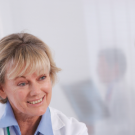Disclaimer: The views and opinions expressed herein are those of the author(s) and do not necessarily reflect the official policy or position of Consultant360 or HMP Global, their employees, and affiliates. Any content provided by our bloggers or authors are of their opinion and are not intended to malign any religion, ethnic group, club, association, organization, company, individual, or anyone or anything.
DISCLAIMER: This blog was originally posted on April 6, 2011 at http://helpnicaraguachildren.blogspot.com/. Please note, Dr Robson is not accepting donations at this time. However, he would greatly appreciate your comments and suggestions in support of his efforts.
What went very right was that we provided care to over 100 children in a rural area of Nicaragua. The families appreciated our care and their smiles as they left were affirmation of a positive and helpful impact on their lives. Most had traveled for one or two hours and then were obliged to wait for up to four hours to see us, and afterwards they traveled for another one to two hours to return home. Can you imagine the average Canadian family doing this to obtain routine health care? Maybe you can. There are some that say charity begins at home and that the Canadian Health Care system is in trouble, but that is another issue. Compared to Nicaragua, our health care is excellent.
What went right was that notwithstanding communication challenges, we connected satisfactorily with the mothers. I didn't say very good, I certainly didn't say excellent; I said, satisfactory. This was positive but my Spanish skills need a lot of work and this will take time and practice.
What went right was that we provided much needed medications that will help families for many month to come. The two bags of medications we brought were the equivalent of about 20% of their available pharmaceutical stores!
The toys we brought for the children were a big hit. We brought just enough and next time we will bring more.
Google Translate was a great help with communication. With the next visit we will bring a portable printer so that we can print out individualized treatment instructions for the mothers. Last weekend I purchased a Canon Pixma IP100 portable inkjet printer. The printer weighs only 4.4 pounds and is faster than the printer I have at home.
There are other clinics in the region that also deserve help and in the future I would like to work in a variety of situations and perhaps help to improve communication and cooperation between the clinics. You would think that in such a medically impoverished country that everyone would cooperate for the greater good, but politics, competition, and egos intervene everywhere.
I learned about an American charity, Foundation for International Medical Relief of Children (FIMRC), that has a mission to provide health care to children in poor countries. They are working to establish a medical clinic for children in the region. I contacted them and there is a good possibility that I will collaborate with FIMRC during future visits. The photo below shows the clinic in Las Salinas where FIMRC is working to establish a clinic for children.
From a logistical perspective, our Garmin NAVI GPS was very helpful to navigate from Managua to the remote area in southwestern Nicaragua. Kudos to Louise who was the navigator. We never got lost.
Some parents in my practice and some physicians who refer to me have asked to donate money to this project. Thank you! I need to set up a Canadian Charity before I can accept money. Spending my own money and accepting donations of medical supplies is one thing. Spending the money of another person is quite another thing. I am a do-it-by-the-book kind of guy. I like to cross the "t's" and dot the "i's." I cannot accept money without legal and financial accountability. I will keep you posted.
We will visit again during the last two weeks of April. We will spend another week to gain experience and to determine if this is the correct venue to channel our efforts. Karen, my daughter, will accompany me on this trip. She has time off courtesy of Spring Break.
There was nothing that really went wrong.
Yes, our luggage didn't arrive with us and we had to wait a half a day the next morning in Managua, but we still arrived at the clinic before sunset.
Yes, the left rear view mirror on the Toyota Land Cruiser was broken and limited my visibility on those crazy roads.
Yes, my Spanish was poor, but between the modest English of the clinic staff and my mediocre Spanish, and courtesy of Google Translate, the communication with mothers was satisfactory.
Yes, we did develop a flat tire on the second last day, but this was fixed and we made it back to the airport over those rough and tumble roads without a second flat tire, which really would have been a problem.
Yes, someone did ding the Toyota, which somehow cost me $384 notwithstanding the maximum insurance coverage available. This happened in the "security lot" at the Hotel Colon in the center of Granada. The high wire fence and security guard protected the Toyota from thieves, but the close quarters allowed another "secured" car to hit mine. They didn't report it.
Yes, there were strange bugs and one snake was spotted, but apart from some itchy bites, this was no different than the risks of a walk in the Alberta mountains when the bugs are biting.
So yes, there were lots of minor frustrations. But, there were more than enough smiles and successes to make the troubles all seem inconsequential.
This is the local trucking industry. Carts like this, towed by an ox or horse, transport bricks, bananas, wood or whatever.
Lots of homes had a beehive kiln in the front yard.
Water wells were common.




